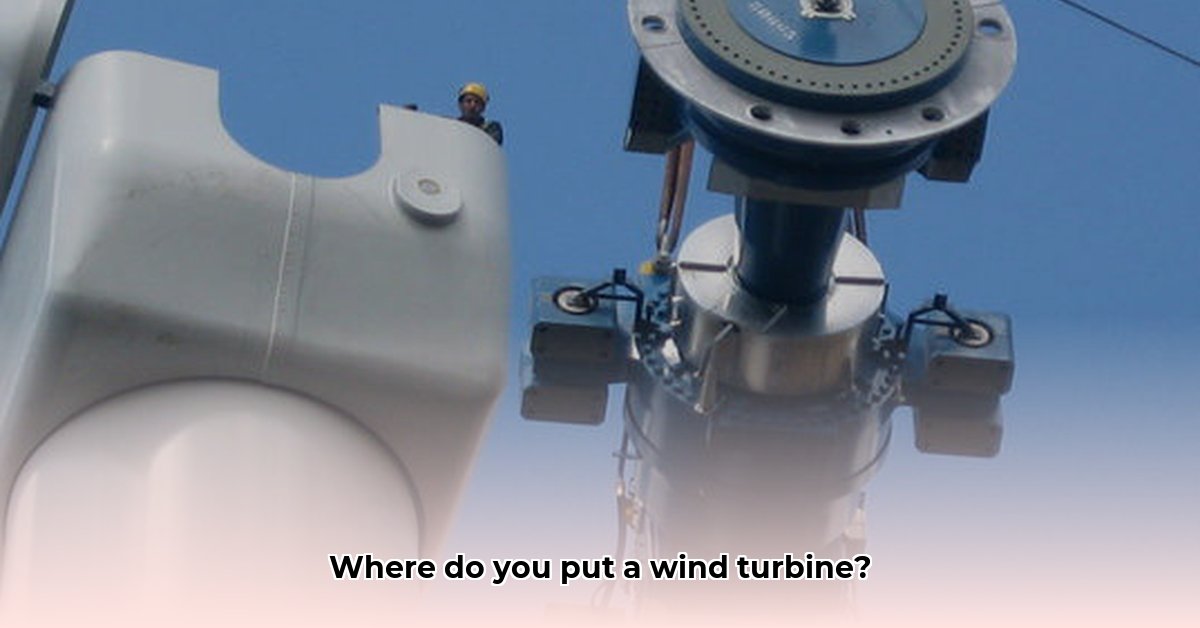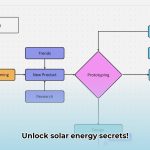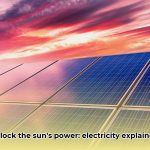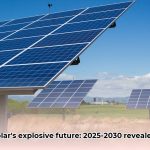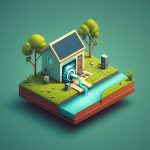Unlocking Wind Power: Choosing the Right Location
Effective wind turbine placement is crucial for maximizing energy production and minimizing negative impacts. This comprehensive guide provides a step-by-step approach to site assessment and selection, covering everything from wind resource analysis to community engagement.
Harnessing the Wind: Assessing Wind Resources
Wind power’s success hinges on consistent, strong winds. Assessing wind resources involves a multi-pronged approach:
-
Initial Exploration (Preliminary Assessment): Begin with readily available resources like wind maps and meteorological data. These provide a general overview and help identify promising areas.
-
On-Site Investigation (Data Collection): Deploy anemometers and meteorological masts at potential sites to gather precise data on wind speed, direction, and consistency over an extended period (ideally a year or more).
-
Data Interpretation (Analysis): Utilize specialized software to analyze collected data. This helps predict potential energy output, factoring in wind characteristics and turbine specifications.
-
Visual Representation (Resource Mapping): Create wind resource maps to visualize wind data, aiding in pinpointing optimal turbine locations within a site.
Minimizing Impacts: Environmental Considerations
While wind energy is clean, minimizing environmental impacts is paramount. Key areas include:
-
Avifauna Impacts (Birds and Bats): Studies, including radar observations, can identify flight paths and inform strategies to reduce collisions. Ongoing research suggests certain placement strategies may further mitigate risks.
-
Acoustic Impact (Noise): Acoustic modeling helps predict noise levels and informs mitigation measures like sound barriers or adjusted operating schedules.
-
Visual Impact: Assessments consider how turbines alter the landscape. Strategies like careful siting and design choices can minimize visual intrusion.
Navigating Regulations: Zoning and Permitting
Securing necessary approvals involves understanding local, state, and federal regulations:
-
Local Zoning: Consult local zoning boards for rules regarding setbacks, height restrictions, noise limits, and aesthetics.
-
State Regulations: Research state-specific rules, which may have stricter standards or additional permit requirements.
-
Federal Oversight: Projects on federal land require additional reviews, including land rights and extensive environmental assessments.
-
Permitting Procedures: Be prepared for a potentially lengthy process involving multiple agencies and permit types.
Ensuring Longevity: Long-Term Planning and Maintenance
Sustained performance requires proactive maintenance:
| Maintenance Task | Description | Why It Matters |
|---|---|---|
| Regular Inspections | Periodic checkups by qualified technicians. | Identifies potential problems early, preventing major breakdowns. |
| Lubrication | Maintaining proper lubrication of moving parts. | Reduces wear and tear, extending component lifespan. |
| Blade Repair | Promptly addressing blade damage, even minor cracks. | Damaged blades reduce efficiency and can lead to more serious problems. |
| Electrical System Maintenance | Regular checks and maintenance of generators, wiring, and other electrical components. | Ensures reliable power generation and prevents electrical faults. |
| Manufacturer Recommendations | Adhering to manufacturer guidelines for maintenance schedules and procedures. | Crucial for warranty coverage and maximizing turbine lifespan. |
Optimizing Efficiency: Turbine Selection, Spacing, and Layout
Choosing the right turbine and spacing is essential:
-
Turbine Selection: Turbine size and type significantly influence performance. Larger turbines may be more efficient in higher wind speeds, while smaller turbines might be better suited to lower wind speed regimes.
-
Turbine Spacing: Optimal spacing balances maximizing land use and minimizing wake effects (turbulence created by upstream turbines). Computational fluid dynamics (CFD) modeling can determine ideal layouts.
Engaging the Community: Building Consensus
Community acceptance is vital for project success. Engage local stakeholders early, address concerns, and highlight potential benefits. Transparency and open communication foster trust.
Grid Integration and Economic Viability
-
Grid Connectivity: Proximity to existing transmission lines simplifies grid integration. Assess grid capacity to ensure it can handle the added power.
-
Economic Analysis: Conduct thorough cost-benefit analyses considering construction, operation, maintenance, and potential revenue.
Staying Ahead of the Curve: Ongoing Advancements
Wind energy technology is constantly evolving. Staying informed about advances in turbine design, control systems, and siting strategies allows for continuous improvement and optimization.
Site Assessment Checklist
This checklist summarizes the key steps:
- Wind Resource Assessment: Analyze wind data, conduct on-site measurements, and create wind resource maps.
- Environmental Impact Assessment: Evaluate potential impacts on wildlife, noise, and visual aspects.
- Regulatory Compliance: Secure all necessary permits and approvals.
- Community Engagement: Communicate openly with local communities.
- Geotechnical Investigation: Assess ground conditions for foundation stability.
- Land Use Compatibility: Analyze current land use for potential conflicts.
- Grid Connectivity Assessment: Evaluate proximity and capacity of existing grid infrastructure.
- Economic Feasibility Study: Conduct a thorough cost-benefit analysis.
- Turbine Selection and Spacing: Choose appropriate turbines and optimize spacing for maximum efficiency.
- Long-Term Maintenance Planning: Develop a comprehensive maintenance plan.
By meticulously considering these factors, wind energy projects can maximize clean energy generation while minimizing environmental and community impacts. Ongoing research and technological advancements will likely further refine best practices, offering even greater potential for harnessing wind power effectively.
- Water Wheel Electric Generator Provides Free Home Electricity - December 15, 2025
- Choosing the Right Portable Hydro Turbine for Your Needs - December 14, 2025
- Best Portable Hydro Generators for Off-Grid and Outdoor Power - December 13, 2025
